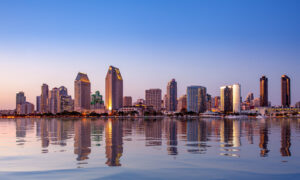The Future of Workplace Design: Integrating Sustainability and High-Performance Spaces in Urban Environments
Read the original article published on Best Stocks here:
https://beststocks.com/the-future-of-workplace-design-integrating-sustainability/
by Bojana Ristic
Workplace design is undergoing a significant transformation as companies prioritize sustainability and high-performance spaces within urban environments. This shift is driven by a growing awareness of environmental impact and the desire to create healthier, more efficient workspaces. In this article, we’ll explore the key trends shaping the future of workplace design, focusing on the integration of sustainability principles and the creation of high-performance environments.
Sustainability in Workplace Design

Sustainability has become a central focus in workplace design, with companies seeking to reduce their carbon footprint and create environmentally responsible spaces. One key trend is the incorporation of sustainable materials and practices in building construction and interior design. This includes using recycled materials, implementing energy-efficient systems, and maximizing natural light to reduce energy consumption.
Another aspect of sustainable workplace design is the promotion of employee well-being and health. This includes incorporating biophilic design elements such as living walls, greenery, and natural materials to create a connection to nature and improve indoor air quality. Additionally, designing spaces that encourage physical activity, such as standing desks and accessible staircases, promotes employee health and reduces sedentary behavior.
High-Performance Spaces
High-performance spaces are designed to optimize productivity, collaboration, and innovation in the workplace. This involves creating flexible, adaptable layouts that can easily accommodate changing work needs and preferences. Open-plan layouts with designated collaboration zones foster communication and teamwork, while quiet areas and private spaces provide opportunities for focused work and concentration.
Technology also plays a crucial role in high-performance workplace design, with companies integrating smart building systems and digital tools to enhance efficiency and connectivity. This includes advanced lighting and HVAC systems that adjust based on occupancy and preferences, as well as integrated communication platforms that facilitate remote collaboration and flexible work arrangements.
The Future of Workplace Design

Looking ahead, the future of workplace design will continue to prioritize sustainability and high-performance spaces within urban environments. This includes incorporating innovative technologies such as biometric sensors and artificial intelligence to optimize building operations and personalize the workplace experience. Additionally, as remote work becomes more prevalent, flexible and adaptable spaces that support a hybrid workforce will become increasingly important.
The future of workplace design is focused on integrating sustainability principles and creating high-performance spaces that prioritize employee well-being, collaboration, and innovation. By embracing these trends, companies can create environments that not only support their business objectives but also contribute to a more sustainable and resilient urban ecosystem.
CJ+C Expands to Atlanta: Shaping Urban Environments
Carrier Johnson + Culture (CJ+C), an established design firm headquartered in San Diego, California, is embarking on a new chapter of growth with the opening of a satellite office in Atlanta, Georgia. This strategic move represents a significant milestone in the firm’s expansion journey, following successful expansions into other major metropolitan areas like Los Angeles and Seattle.
With a deliberate focus on expanding its footprint across diverse geographical regions, CJ+C aims to bring its renowned expertise and holistic design approach to shape the urban fabric of Atlanta and contribute to its evolving development landscape.
At the helm of this expansion effort are Luca Maffey, Firmwide Head of Design and Design Principal, and Craig Anderchak, Director of Interiors and Managing Principal, both esteemed professionals with extensive experience in the design industry, including the design of corporate workplaces. Leveraging their combined expertise and understanding of the Atlanta market, CJ+C seeks to make a meaningful impact on the city’s built environment, as per a recent press release.
The decision to establish a presence in Atlanta underscores Carrier Johnson + Culture’s commitment to addressing the evolving needs of clients across various sectors and geographic regions. Claudia Escala, Co-President of CJ+C, highlights the firm’s unwavering dedication to delivering exceptional design solutions in architecture, interiors, landscape, and urban planning. With a keen eye on sustainability and a holistic approach to design, CJ+C is poised to make a lasting impression on Atlanta’s urban landscape, fostering vibrant and resilient communities.
Conclusion
As companies strive to create environments that promote sustainability and productivity, workplace design will continue to evolve to meet the needs of employees and the demands of the modern workforce. By integrating sustainable practices and prioritizing high-performance spaces, businesses can create workplaces that not only support their bottom line but also contribute to a more sustainable and resilient urban environment.


